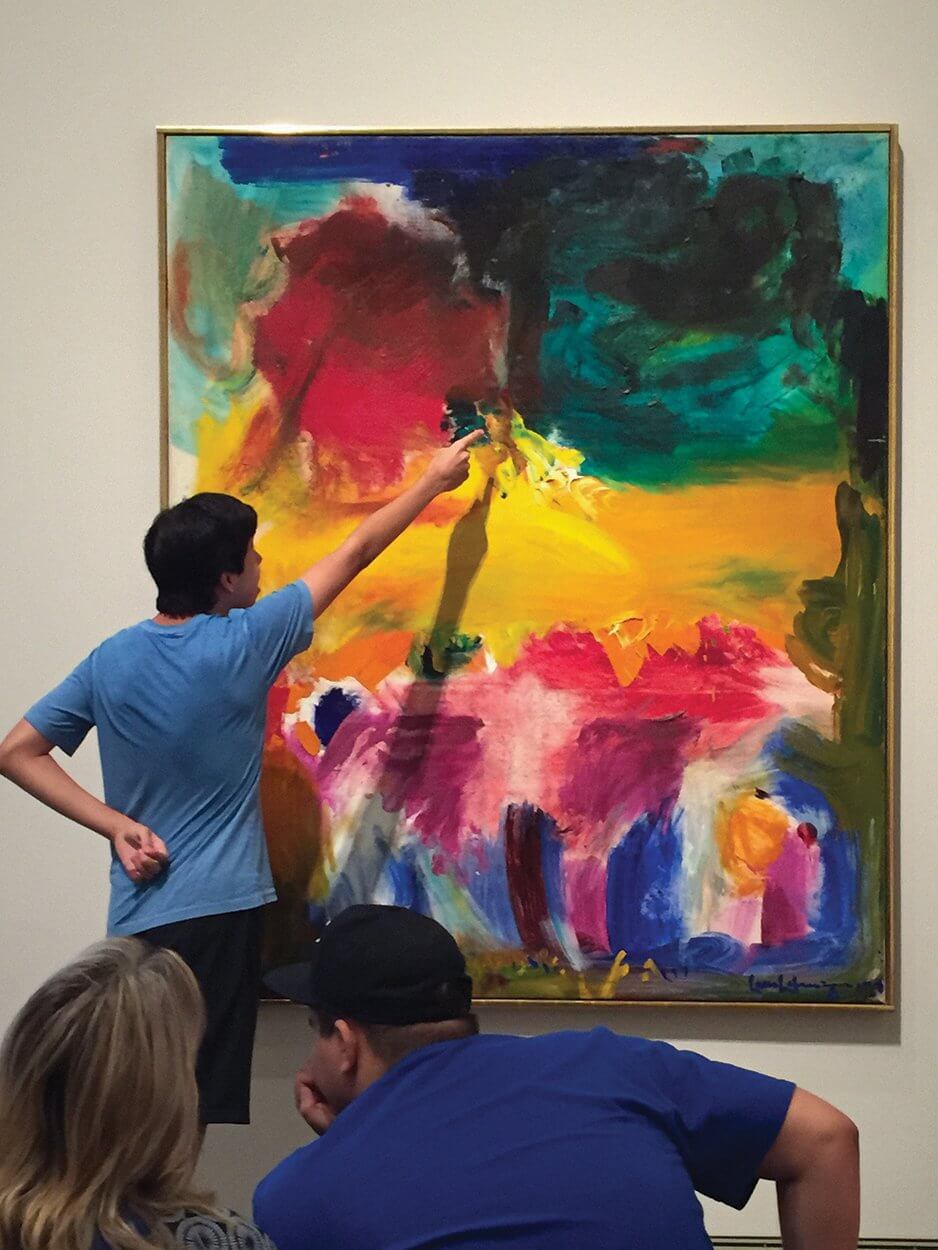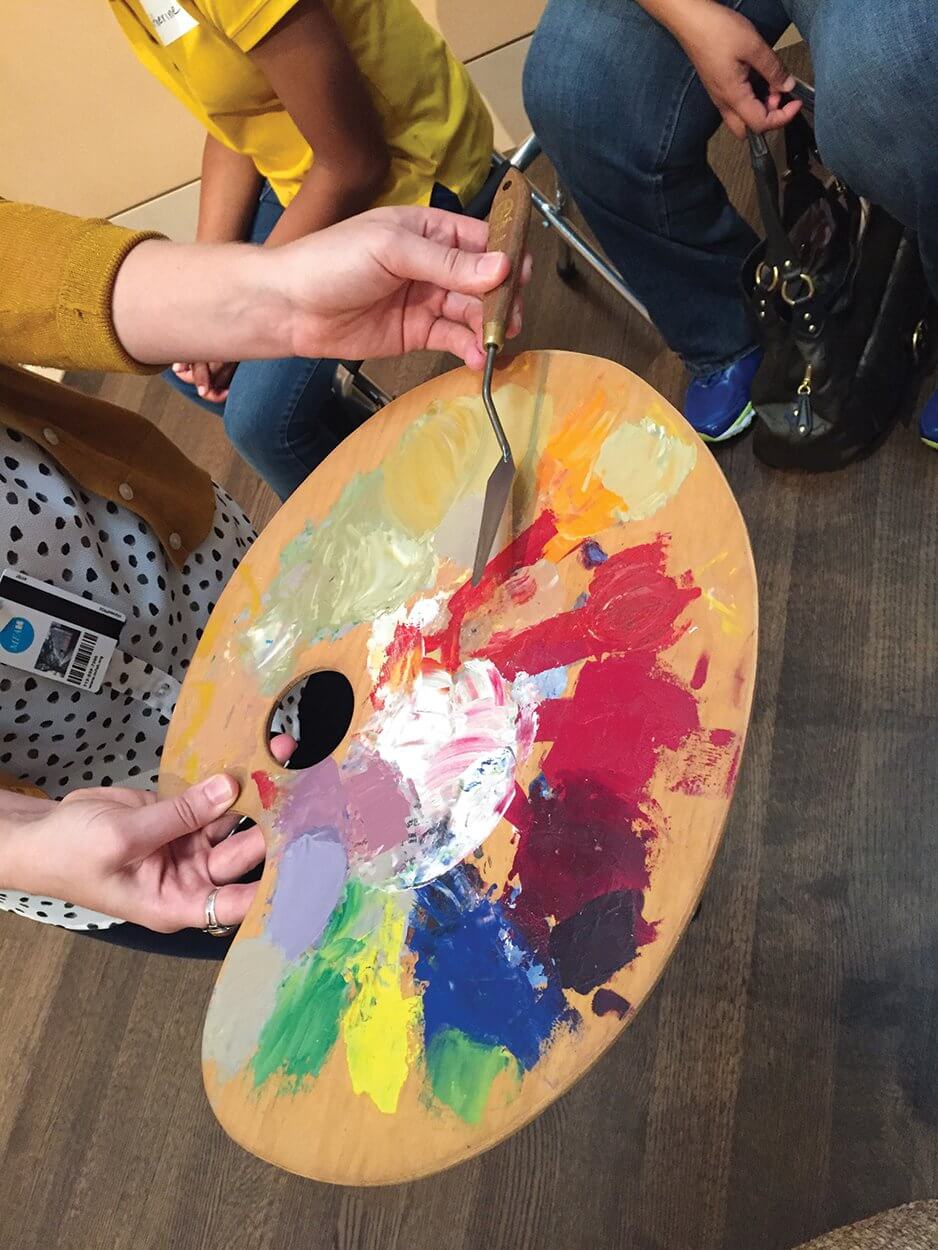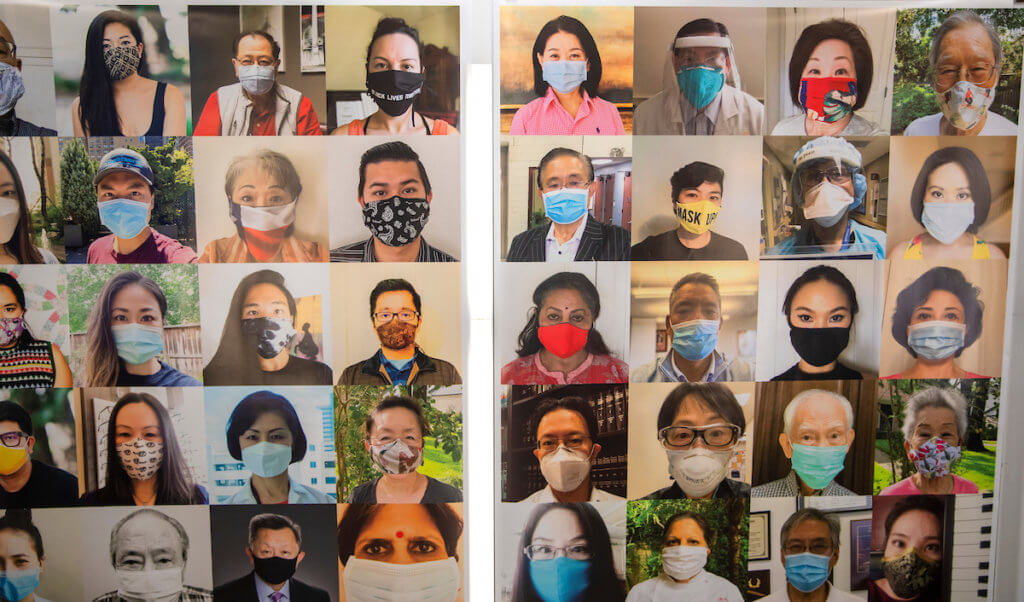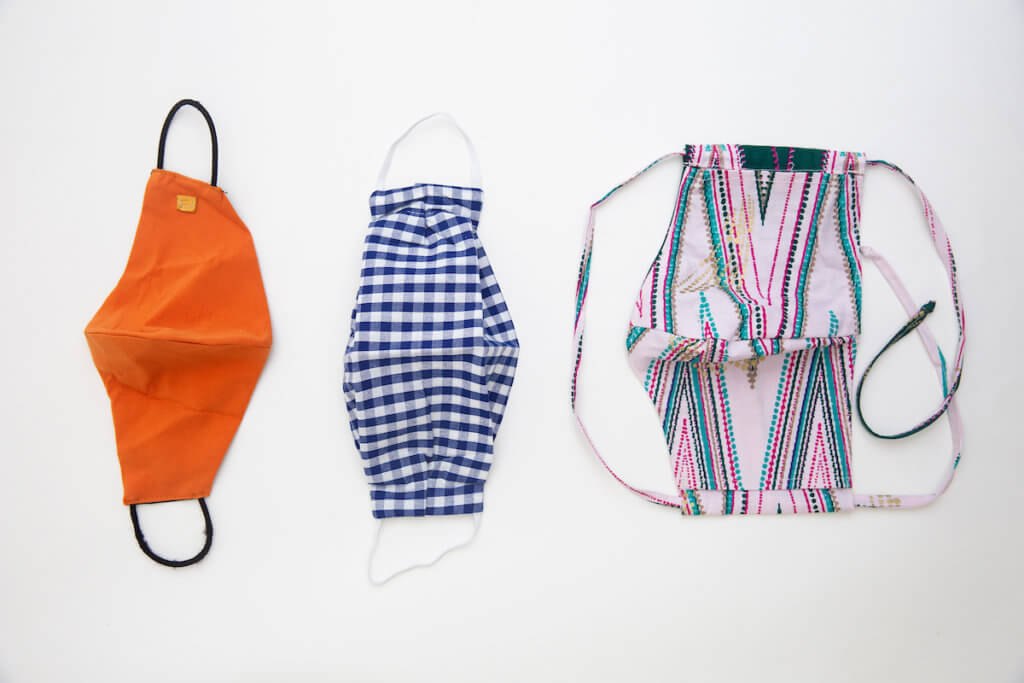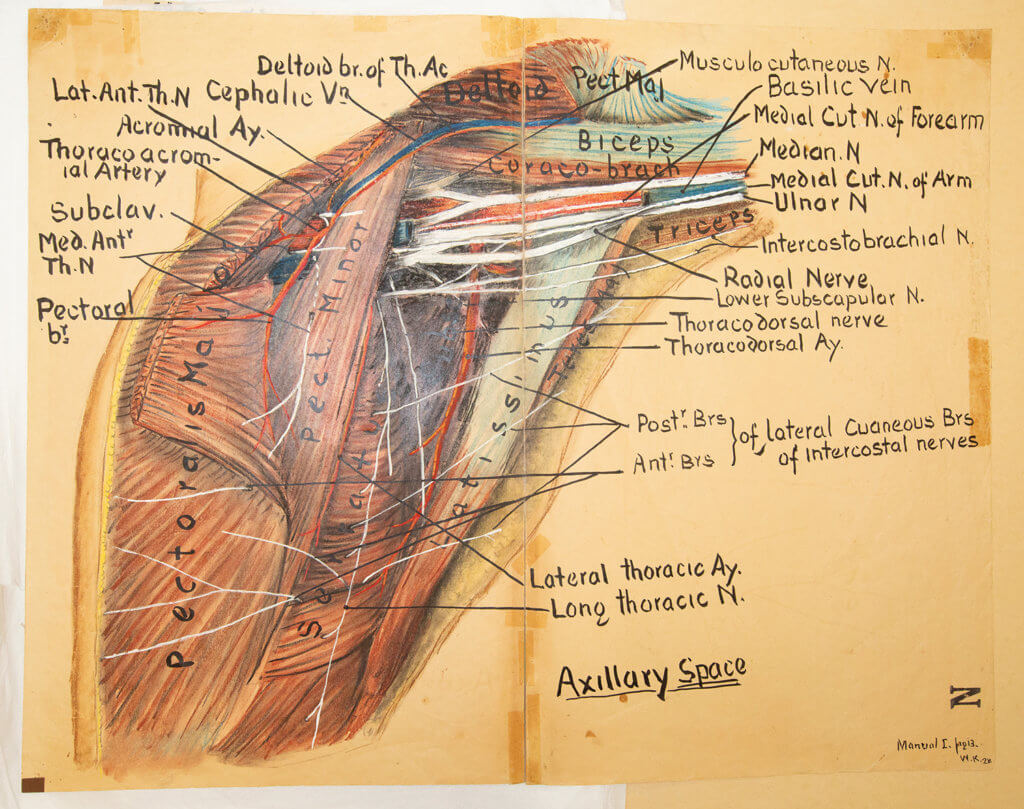Sensory Explorations at Museum of Fine Arts, Houston
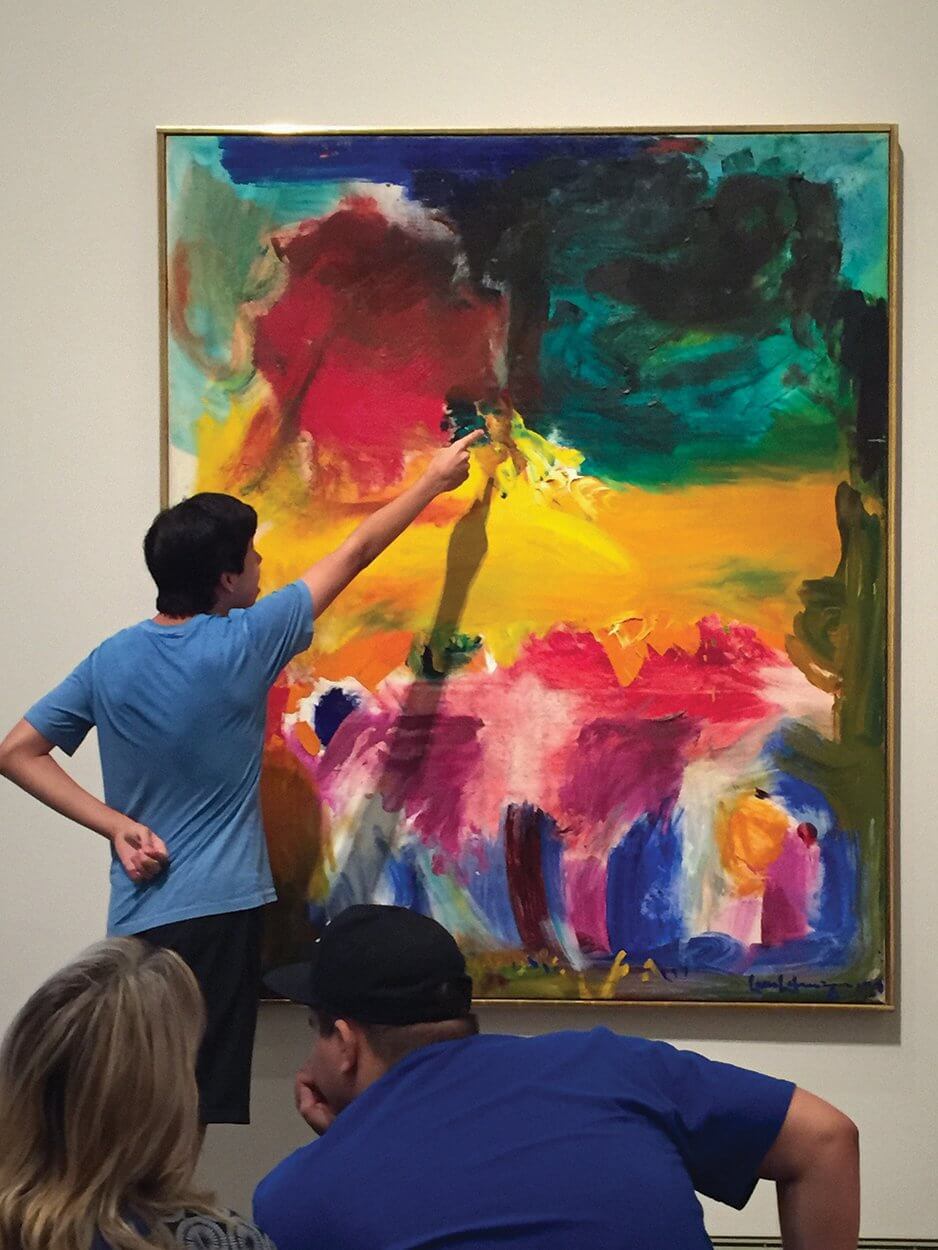
Museums are designed to be stimulating, but individuals with special needs require special accommodations to make the most of their visits. The Museum of Fine Arts, Houston (MFAH) has partnered with local and national groups to develop three programs that serve specific populations.
The newest program, Sensory Explorations, is designed for young adults on the autism spectrum.
“There are certain things that we need to be aware of and certain things that we can try and build into the program to make sure it is as relevant and accessible for this particular population as possible,” said Chelsea Shannon, an educator, writer and art historian at MFAH.
Sensory Explorations came about through a local partnership with Social Motion, a nonprofit founded by Wendy Dawson.
“I founded Social Motion eight years ago because of my stepson, Cameron,” Dawson said. “I went into the community to find the social skills and extracurricular activities that he needed, and there was not anything for him. We teach our students with autism and similar special needs the social skills that they need—we call it ‘front loading’—so when they meet occasions and situations in life, they will be able to handle them.”
Sensory Explorations usually draws 10-12 participants for each session. Individuals in the group begin their museum experience with a gallery discussion and end by making their own art.
“We know that there is a real interest in exploring a multi-sensory experience for this population, and in kind of a safe and controlled environment,” Shannon said. “They have a chance to process, reflect and talk about the experience they have just had.”
Sensory Explorations is a great way for young autistic adults to experience the best of Houston’s cultural resources, Dawson added.
MFAH’s other special programs include Art Beyond Sight, for visitors who are blind or have low vision, and Looking Together, for visitors with dementia or Alzheimer’s disease.
Art Beyond Sight, a national program started by Art Education for the Blind, emphasizes a verbal and tactile experience at the museum. At MFAH, tours begin with a detailed description of the piece of art the group will encounter. Gallery leaders also bring in materials used in the art work—including different types of stone, textured paint or raised and textured surfaces and diagrams.
Looking Together, a program made possible through a partnership between the MFAH and the Alzheimer’s Association’s Houston and Southeast Texas Chapter, begins each session by asking participants to observe an object and reflect on what they see.
“The program kind of becomes a way to access memories or life experiences,” Shannon explained. “In that way, it is a little bit less structured than the other programs because it really is based on that moment of connection and reflection.”
For Dawson, MFAH’s special programs help participants experience Houston on a deeper level.
“Like my son, everyone with autism strives to be normal … to have the chance to experience these beautiful attributes that our city has in a ‘normal’ way that is tailored to their needs,” she said. “Maybe it’s just turning the lights down a little bit lower or limiting the amount of participants that come through. But it allows them basically equal access to everything that we love and enjoy and take so for granted in life.”
Sensory Explorations, Art Beyond Sight and Looking Together are free programs, but space may be limited. Museum of Fine Arts, Houston is located at 1001 Bissonnet St. For information about special tours, email tours@mfah.org.

